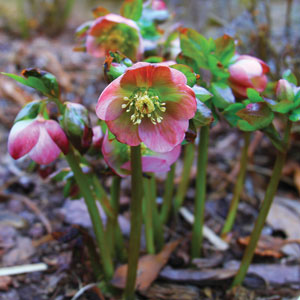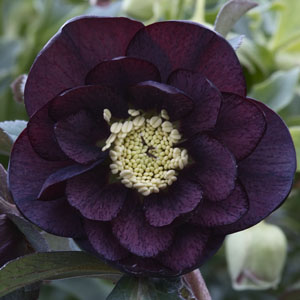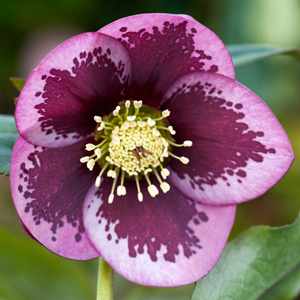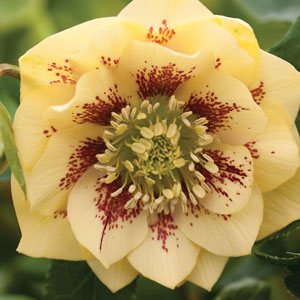Hellebore Growing Guide

What is Hellebore?
Hellebore (Hellebore hybridus) also known as Winter Rose is an evergreen herbaceous perennial. They are long lived, dry and frost tolerant plant that has a tidy upright habit. A member of the Ranunculaceae or buttercup family, which also includes anemone and clematis.
Benefits of Growing Hellebore
Hellebore are a very easy to grow plant. They start flowering in Winter to early Spring with bunches of hanging flowers that range in a variety of colours from dark reds and purples to pale pinks and yellows. After flowering into Spring the new leaves will begin to sprout. Different varieties will have different patterns however they all display pointed leathery green to dark green leaves.
Hellebores will bring colour to your Winter garden and look stunning when planted in mass or surrounding a large deciduous tree. They are not troubled by the cold or frost. Herllebores are drought tolerant when established.
How to Grow Hellebore
Climatic Zones
Hellebores require a temperate climate with cool to cold Winters as they don’t like humidity.
Plant Size
Height: 40-60cm, Width: 40-60cm
When To Plant Hellebore
Plant in Autumn to Spring to have them settled before the heat of Summer.
Soil Preparation
Hellebores grow in most soil types however very sandy soil is where they will struggle. When planting, mix well broken down manure through the soil. Blood and bone and a complete fertiliser can also be used when planting and throughout the years. Also each year top dress in Winter with well broken down manure to help with growth and production of larger blooms.
How To Plant Hellebore
Plant in part to full shade, 45-60cm apart with the plant crown at soil level.
Hellebore Plant Care
Late Autumn is the main time for maintenance of Hellebores. Removal of old or dead leaves right down to the ground in late Autumn before the flowers and then the new growth starts shooting. Late Autumn to Early Winter you can transplant them, however make sure that the roots do not dry out during the transplanting process. Spent flowers can be removed after flowering in mid Spring as this will prevent the seed from dropping. However leaving the flower stalks on will allow the seeds to disperse and next year you will hopefully be delighted to see new seedlings starting to appear.
Hellebores enjoy damp ground and they need to be kept well watered throughout dry periods. Mulching around your Hellebores before the heat of Summer will help keep the moisture in during the hot times.
Watch out for sail and slugs that will attack the leaves. Also be on the watch for aphids as the weather begins to warm up.
Recommended Hellebore Varieties
Bring colour and depth to your cold winter garden, hellebores are a great addition. As long as they have some shade during hot Summer afternoons these beauties will grow strong for years and years.











